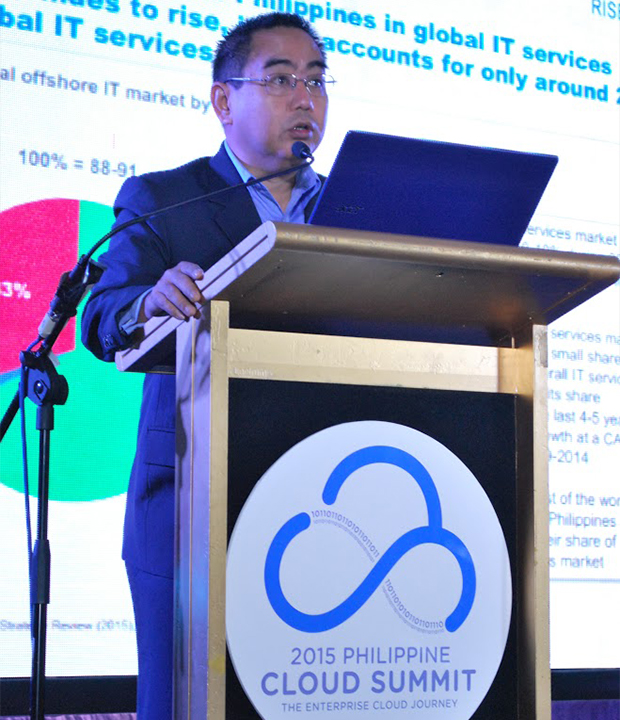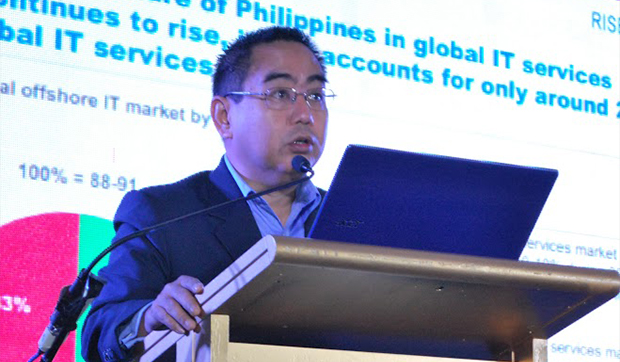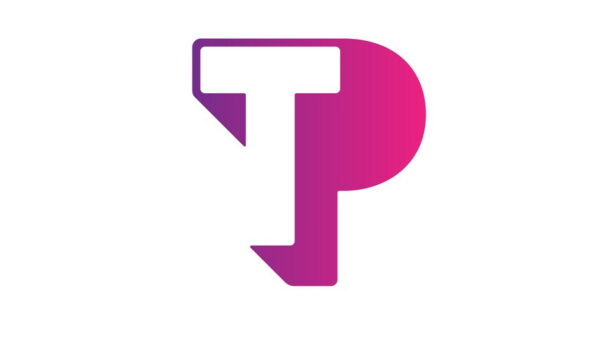The move towards cloud computing is accelerating in the Philippines where the technology is received and recognized.

“It’s been a very nice journey for the Philippine software industry, whose performance amounts to $15.5-billion in terms of revenue,” said Jonathan Defensor de Luzuriaga, president of the Philippine Software Industry Association, adding that “despite this significant showing, there’s still so much room for growth.”
This was stressed at the 2nd Philippine Cloud Summit, which highlighted how the Philippines is experiencing growth in terms of cloud readiness and adoption as evidenced by the two-point improvement in the Cloud Readiness Index compared with the previous index.
“Cloud adoption is now the norm,” said Jonathan Defensor de Luzuriaga, president of the Philippine Software Industry Association (PSIA). “Adoption of cloud in the business sector is very strong while the government aims to put everything in the cloud.”
Luzuriaga, who spoke about “Transforming Business into Digital Enterprise” at the summit, said there’s still lot of issues that we need to address but apparently experts are saying we’re moving at the right direction.
The readiness and acceptance of the cloud technology by local businesses can be attributed to the growth exhibited by the local IT-BPM industry, which is considered as instrumental in the country’s upward movement in Cloud Readiness Index.
Luzuriaga cited that the share of the Philippines in the global market for IT services is two percent. The biggest markets for IT services served by local BPOs are the US, which corners 45%; and Japan, at 25%.
“It’s been a very nice journey for the Philippine software industry, whose performance amounts to $15.5-billion in terms of revenue,” said Luzuriaga, adding that “despite this significant showing, there’s still so much room for growth.”
Currently, the local IT-BPM industry is composed of more than 400 software companies, where 80% focus on services; five percent concentrate on creating their own products; while the remaining 15% attend to both services (software and IP).It has more than 200,000 IT and software personnel, of which, over 80,000 are developers of software intended for export.
Luzuriaga also mentioned the types of work that are now in demand in the industry. “Application and development maintenance and infrastructure outsourcing continue to dominate while the deliberation of systems integration and consulting services remain very high.”
This high demand is the result of the availability of talent and infrastructure. “There are companies which are looking for the possibility of having their software development support situated here in the country,” said Luzuriaga.
The government, on the other hand, is also giving its full support to the industry. “In fact, the PSIA could not stand without the support of the DOST- ICT Office, the DTI and DepEd. We’re doing a lot of changes not only in the industry level but also in the curriculum level,” Luzuriaga said.
Another thing that is happening in the IT environment is the birth of IT startups. There are many startups right now, even in bigger organizations.
“They now allow startups to come up with crazy ideas to change the world, to come up with their small groups,” said Luzuriaga. “This prompted us to come up with SPRING.ph (Software PRoducts Incubation Group) which aims to nurture, encourage, educate and support the needs of Filipino software startups.”
The association came up with SPRING.ph to create at least 10 globally-recognized software products in 2016 with a goal of generating at least $1 million in annual revenue.
To date, close to 50 companies have joined SPRING.ph.
“This is one way of propagating the new way of thinking and how to create an intellectual property of software in the Philippines,” said Luzuriaga.
Luzuriaga also emphasized that the $15.5-billion IT-BPM industry may be the “next OFW phenomenom.” A manifesto for 2016 and beyond was created by the association to reach this status and in order for the new government to realize the importance of the industry.
The manifesto will focus on the following areas: educate for a digital economy; expand access to high-speed affordable broadband; leverage ICT to enhance competitiveness; continue to develop ICT-driven industries like BPO; bring Philippine talent home; establish a favorable environment for cloud computing; deploy cloud for disaster resilience; and support the scaling of SMEs and startups.

















































































































